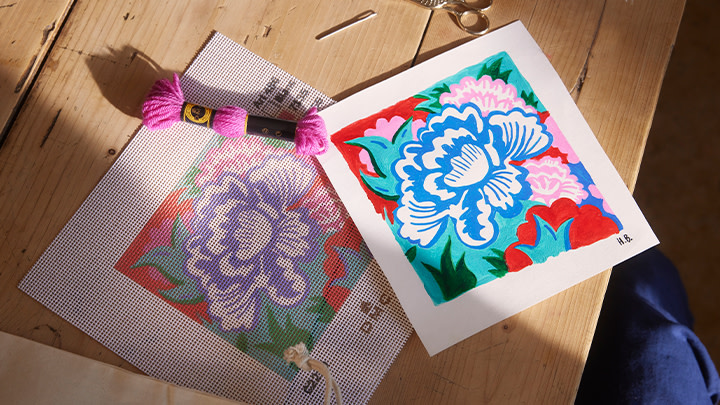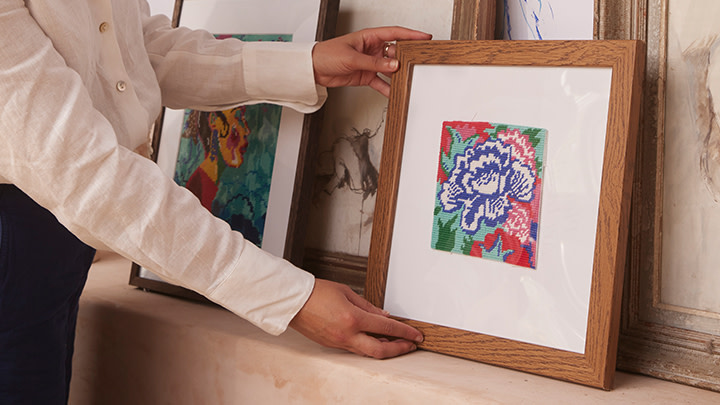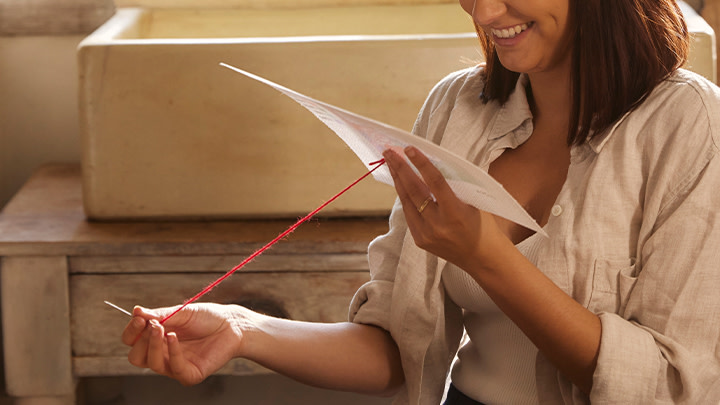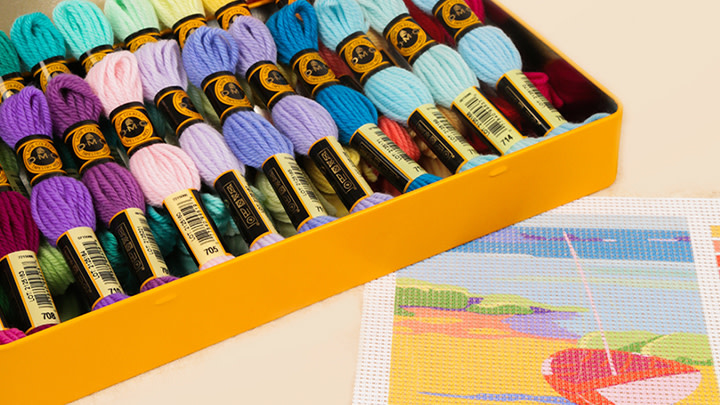Tapestry and needlepoint are really relaxing canvas work techniques that are really beginner friendly. The canvas helps you to make even regular stitches and the design is usually painted or printed on, so there aren’t complicated charts to follow. In this article we explain the different types of canvas that are used for tapestry and needlepoint.
Why is Canvas Important?
Tapestry and needlepoint have been around for centuries and decorated the walls and homes of royal and wealthy families around the world. Both tapestry and needlepoint are forms of counted embroidery that are stitched through a stiff open weave canvas with a tapestry needle. Most tapestry/needlepoint designs completely cover the canvas and can be worked in a variety of stitches and patterns. The degree of detail depends on the count of the underlying canvas. Many designs are painted directly onto the canvas, but there are also designs that are charted, similar to cross stitch with each square in the chart representing one single stitch. Tapestry/needlepoint is worked on canvas, either mono, interlock or a 2-thread canvas called Penelope/Duo.
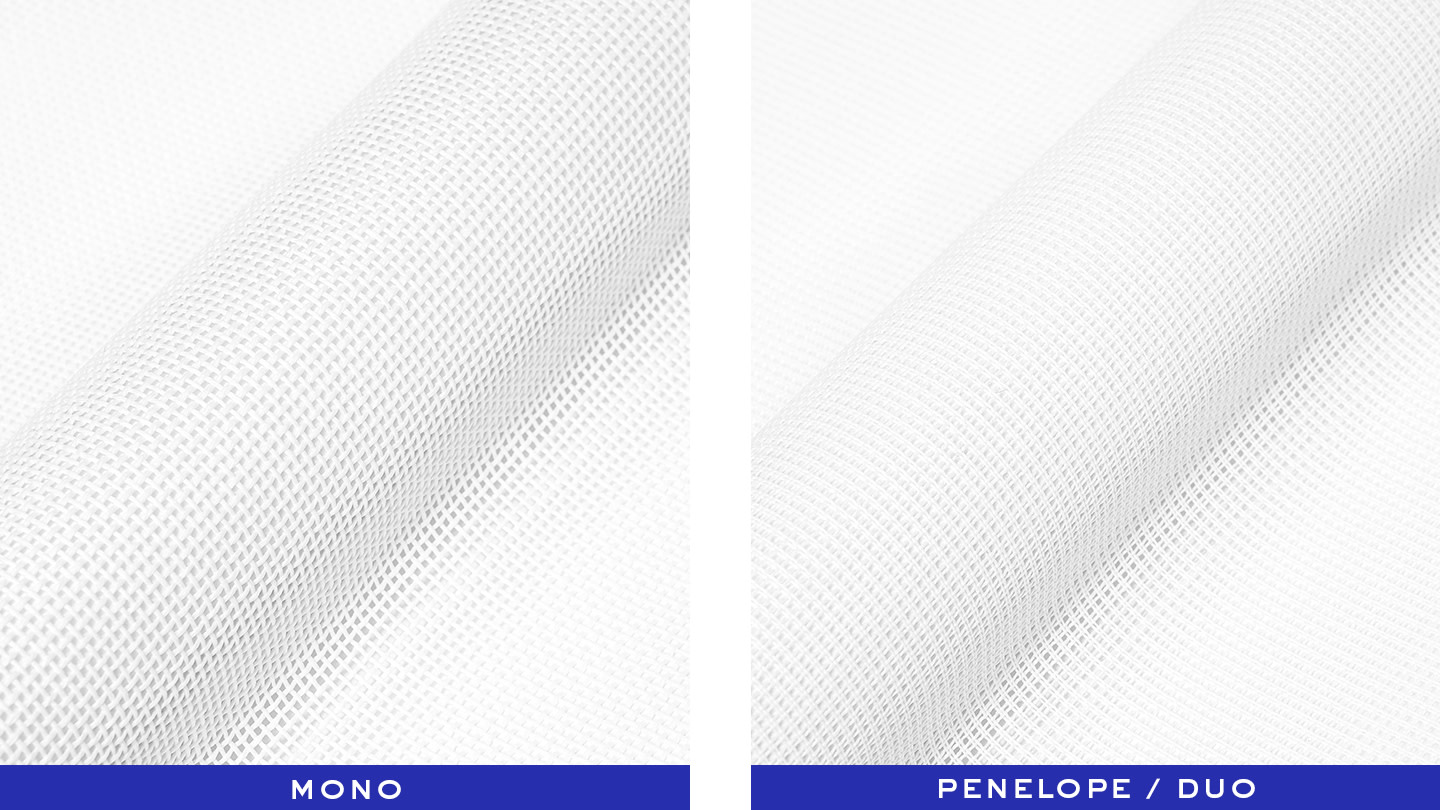
How to Select a Canvas for Tapestry or Needlepoint
If you are buying a kit, painted or printed canvas for needlepoint and tapestry, the type of canvas will have been chosen for you. Here are the most popular types and what they are used for:
Mono canvas is made from single threads woven together. The threads are a consistent thickness and evenly spaced. It has some ‘give’ so it works well for things like cushions that will be sat on. Because of its flexibility you will need to use a frame to stabilize it whilst you stitch. It’s available in a wide range of “counts” - the count of a canvas refers to how many holes per inch. The higher the count the smaller your stitches will be.
Interlock canvas is woven so that two vertical threads trap the single horizontal thread “locking” it in place at each intersection. This makes the canvas more stable. It’s very popular in needlepoint kits and is usually available in white or brown.
Penelope or Duo canvas is a mesh made up of double threads that are woven together which makes it very durable. It is popular in tapestry kits and for homewares because of this durability. It’s available in a wide range of “counts” and because stitches can be made over both threads or just one the count is sometimes listed as two numbers e.g. 5/10. The Second number refers to the number of stitches per inch if you worked the threads individually.
Which Thread Should You Use With a Canvas?
You can use a variety of threads for your tapestry/needlepoint projects ranging from cotton, wool, rayon and silk. DMC offers beautiful tapestry/needlepoint threads from lustrous Pearl Cottons to soft Tapestry Wools. All DMC threads are made from the best quality materials and colorfast and fade resistant dyes. The canvas you use will narrow down your choice of thread a little. Thicker threads such as DMC Tapestry Wool, DMC Soft Cotton or Size 3 Pearl Cotton are used for canvases with lower counts (fewer holes) and finer threads such as Size 5 Pearl Cotton, Six-Strand Embroidery Floss or other finer threads are used for canvases with higher mesh counts (more holes per inch).
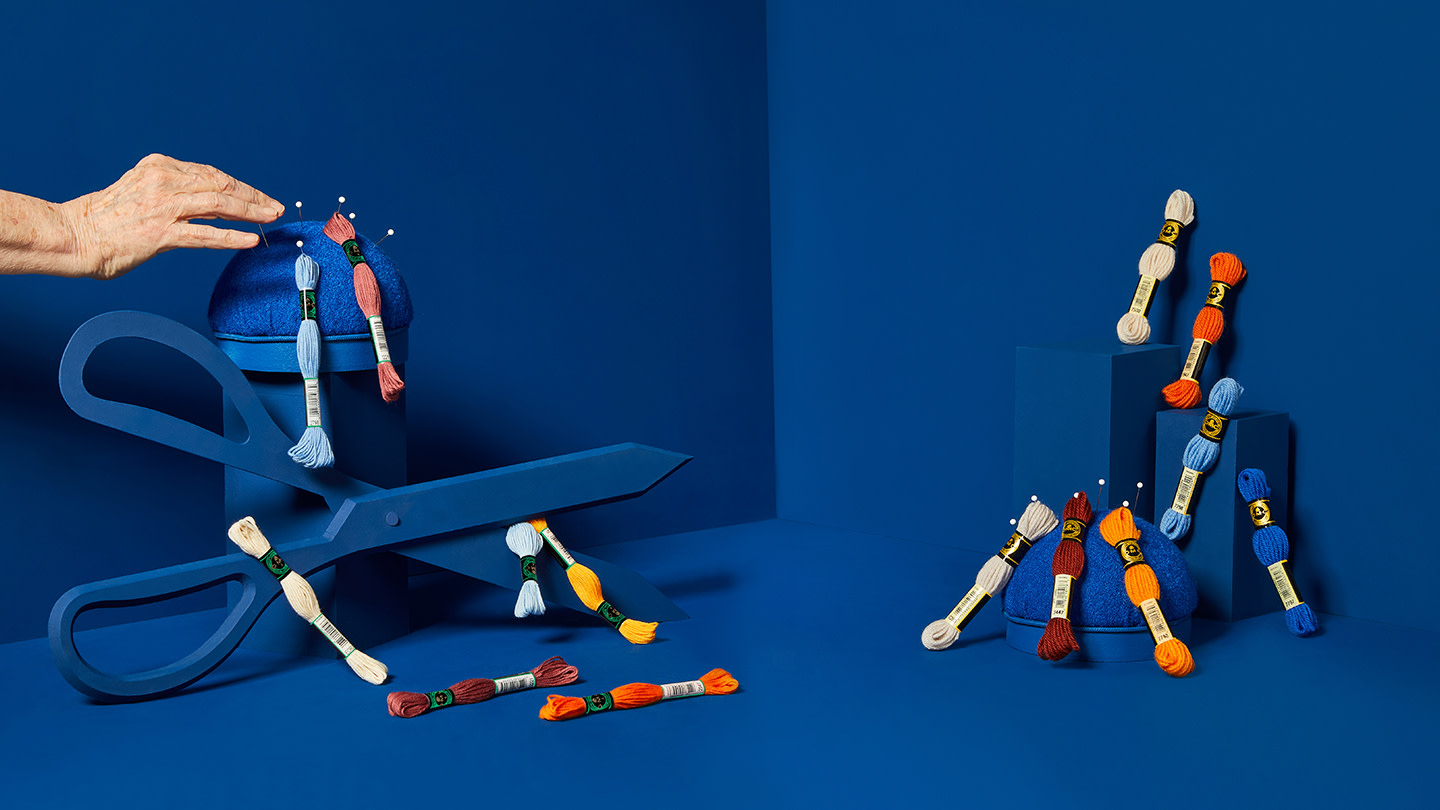
Which Needle Should You Use With Your Canvas?
Tapestry needles are used with canvas, because they have blunt tips. The blunt tips pass smoothly through the holes in the canvas without piercing the fibers. The size of the needle you will use depends on the size of the mesh of the canvas. For example, a fine needle should be used on fine-mesh canvas, while a thicker needle is used on canvases with larger hole sizes. Select a needle that accommodates your thread and will enter the canvas with little or no drag on the thread. Tapestry Needles are sized by number and the bigger the number, finer the needle. 8-10 count Canvas - use a size 16 tapestry needle 10-12 count Canvas - use a size 18 tapestry needle 12-14 count Canvas - use a size 20 tapestry needle 16-18 count canvas - use a size 22 tapestry needle

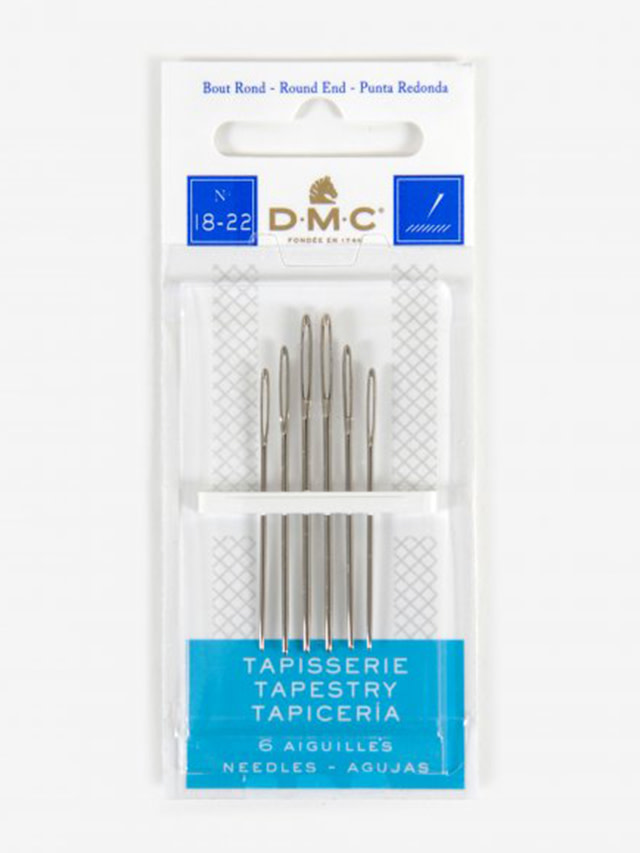
How To Prepare Your Canvas
We recommend you bind the edges of your canvas with masking tape before you begin stitching. This will prevent the canvas from unravelling and from catching the threads as you stitch. Simply cut a piece of tape the length of one side of the canvas. Apply the tape over the canvas edge, with half of the tape on the front side and half on the back side. Repeat on all four sides of the canvas. If you plan to use a frame, mount the prepared canvas to your frame of choice.



